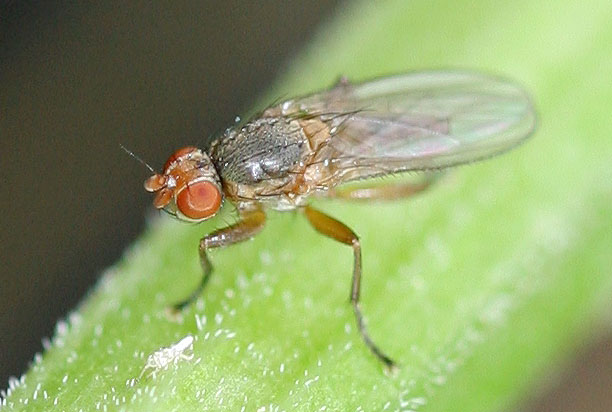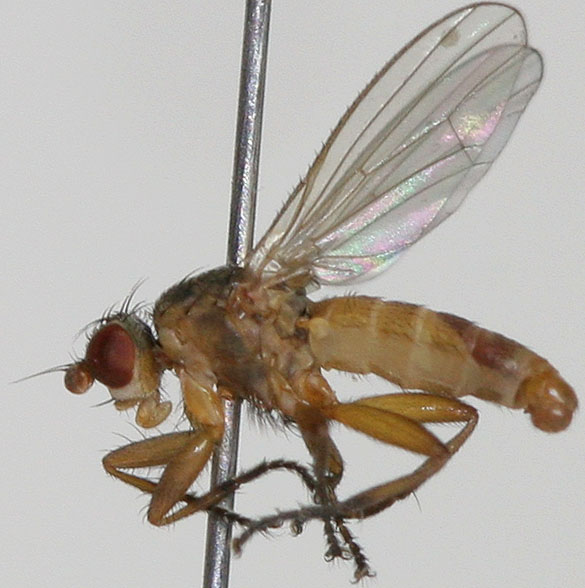Diptera.info :: Identification queries :: Diptera (adults)
|
Neoleria
|
|
| Nikita Vikhrev |
Posted on 07-06-2007 16:03
|
|
Member Location: Moscow, Russia Posts: 9491 Joined: 24.05.05 |
Moscow reg., 07 July, on dead cat. I suspect that it is another Neoleria - N.inscripta - no strip at thorax, less size, lighter and often with yellowish scutellum. Correct? Nikita Vikhrev attached the following image:  [55.73Kb] Nikita Vikhrev - Zool Museum of Moscow University |
|
|
|
| Nikita Vikhrev |
Posted on 07-06-2007 16:09
|
|
Member Location: Moscow, Russia Posts: 9491 Joined: 24.05.05 |
I tried to examine genitalia, but there is no illustration in Gorodkov key...
Nikita Vikhrev attached the following image:  [99.62Kb] Nikita Vikhrev - Zool Museum of Moscow University |
|
|
|
| Andrzej |
Posted on 08-06-2007 10:50
|
|
Member Location: Poland Posts: 2422 Joined: 05.01.06 |
Correctly (the yellow humerus=pronotum is always yellowish-orange too. Good Job  Andrzej |
|
|
|
| Nikita Vikhrev |
Posted on 08-06-2007 11:40
|
|
Member Location: Moscow, Russia Posts: 9491 Joined: 24.05.05 |
Thank you Andrzej. There is distinct ecological difference between N.ruficauda and N.inscripta, both attracted by carrion, but N.ruficauda prefers more "fresh" carrion - with maximum in period 1-2 week after cat death. N.inscripta appear 1-1,5 week later in period 2,5-3,5 weeks after death. Nikita Nikita Vikhrev - Zool Museum of Moscow University |
|
|
|
| Nikita Vikhrev |
Posted on 08-08-2007 13:10
|
|
Member Location: Moscow, Russia Posts: 9491 Joined: 24.05.05 |
Mosc reg., 08 Aug, on dead hedgehog
Nikita Vikhrev attached the following image:  [66.39Kb] Nikita Vikhrev - Zool Museum of Moscow University |
|
|
|
| Andrzej |
Posted on 13-08-2007 15:55
|
|
Member Location: Poland Posts: 2422 Joined: 05.01.06 |
Both specimens belong to Neoleria inscripta. Andrzej  |
|
|
|
| Nikita Vikhrev |
Posted on 13-08-2007 16:23
|
|
Member Location: Moscow, Russia Posts: 9491 Joined: 24.05.05 |
Thank you Andrzej. There is distinct ecological difference between N.ruficauda and N.inscripta, both attracted by carrion, but N.ruficauda prefers more "fresh" carrion - with maximum in period 1-2 week after cat death. N.inscripta appear 1-1,5 week later in period 2,5-3,5 weeks after death. I have to disprove my conclusions above. Correct is another explanation: Both N.ruficauda and N.inscripta appear on 3-4 day old carrion and remain near carrion at least a month. But (in Moscow region): N.ruficauda fly Apr-May N.inscripta fly from end of May till mid-Aug at least Nikita Nikita Vikhrev - Zool Museum of Moscow University |
|
|
|
| Jump to Forum: |












